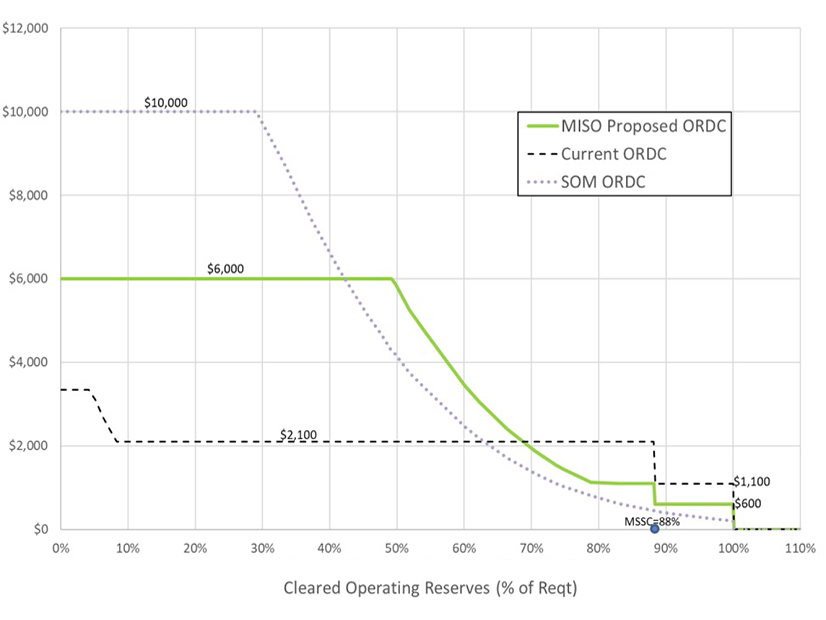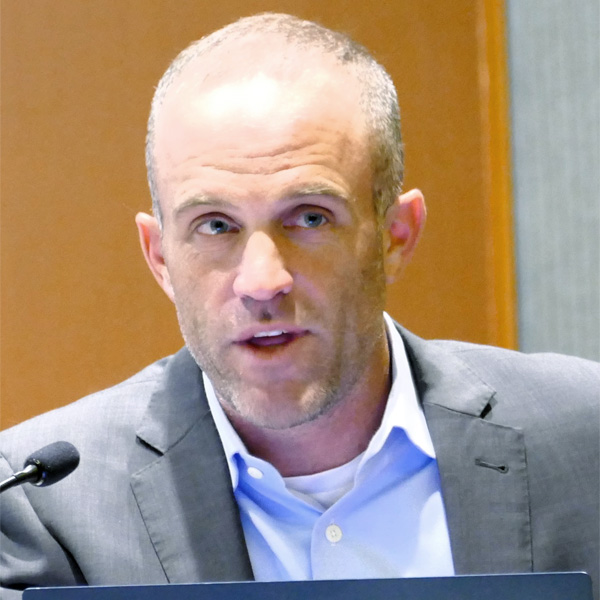WASHINGTON, D.C. — Three senior utility executives told state regulators Feb. 27 that natural gas and nuclear power will be essential to the electric generation mix for decades as the industry decarbonizes.
Speaking at the National Association of Regulatory Utility Commissioners’ (NARUC) Winter Policy Summit, the executives said the industry already has cut carbon pollution in recent decades, while acknowledging the job is far from over.
“Since 1984, carbon emissions have stayed the same out of our sector, but electricity use has grown 73%,” said Edison International CEO Pedro Pizarro. “If the Obama Clean Power Plan had been implemented, the industry would have not only met it and surpassed it, [but done] so earlier than the plan would have called for. We have more than 40% of U.S. generation today coming from clean carbon-free resources like nuclear, wind and solar.”
Pizarro, chair of the Edison Electric Institute, said about 50 of EEI’s members have announced long-term carbon cutting goals and most of them call for net zero by mid-century.
“We’re doing that now in a backdrop where electricity demand is really moving,” he added.
Southern California Edison had seen 15 years of essentially no load growth, but now it is expecting load to grow by 2% each of the next several years, Pizarro said.
Tennessee Valley Authority CEO Jeffrey Lyash said emissions in the agency’s footprint have fallen 60% from 2005. Now electricity is responsible for only 27% of the emissions in the TVA region.
“I think we can get the 80% [reduction from 2005 levels] and keep balanced with that energy security objective,” Lyash said. “The challenge is: And then what? How do you decarbonize the rest of the electricity sector? But more importantly, how do you use electricity, which will be one of the prime ways we decarbonize the rest of the economy?”
Lyash, chair of the Nuclear Energy Institute, said nuclear power will be part of the mix, along with renewables, energy storage, carbon capture and clean hydrogen.
“It’s just such a 24/7, system-stabilizing resource, I’m not sure how you get there without it,” he added.
DTE Energy CEO Jerry Norcia, chair of the American Gas Association, said natural gas is going to have a continued role in a clean energy future.
“When I think about natural gas in our industry, it really has been an enabler of decarbonization,” Norcia said. “About 40% of our power generation in the country now comes from natural gas and that’s a fundamental shift from coal, which was the dominant fuel source for power generation in the past.”
Direct use of natural gas also is popular, with about 189 million Americans using it and 70% supporting its use, he added.
The electric industry is heavily reliant on natural gas and its use is going to be “valuable and critical for a very long time,” Pizarro said. Even in California, SCE’s modeling has the fuel in continued use.
“We see California still having about 40% of the commodity that’s flowing today; it will still be flowing in 2045 economywide,” he said. “For the electric power sector for generation we still see between 4 and 5% of the electrons coming from natural gas-fired resources in 2045.”
Those power plants occasionally burning natural gas in 2045 will have their emissions captured, or at least offset, through “other carbon-negative tools.” Beyond gas, California will need other technologies such as nuclear and eventually offshore wind, which produces power when other renewables do not.
One major issue is whether EPA should complement the Inflation Reduction Act’s incentives with requirements to shut down fossil-fired plants. Pizarro noted that EEI supported the agency when West Virginia and others sued it to stop the Clean Power Plan.
“But we need to make sure that those regulations are fair and reflect reality,” said Pizarro.
Some rules requiring natural gas plants to implement carbon capture or burn clean hydrogen were too stringent based on the development of those technologies, he added. Pizarro was speaking days before EPA announced it would delay regulations impacting existing natural gas plants under its power plant rule, focusing it on coal and new natural gas. (See EPA to Strengthen Emissions Regs for Gas Power Plants.)
EPA Principal Deputy Assistant Administrator for the Office of Air and Radiation Joseph Goffman spoke at NARUC a day before the three trade group chairmen, saying that once the agency issues its final rule on power plants, attention will shift to the states.
“The main driver will be the state plans, that’s where the action is going to be,” Goffman said.
As states issue plans to implement the power plant rules, EPA wants to stay in touch with the economic regulators represented at NARUC along with their environmental regulators, energy offices and legislators, he added.
“That’s where the opportunity will really come to ensure that the rules achieve the urgently needed CO2 reductions from the power sector,” Goffman said. “And at the same time continuing to meet the objectives of a reliable supply of affordable electricity.”
Goffman was speaking alongside a group of state regulators and West Virginia PSC Chair Charlotte Lane. Lane, whose state still is 88% coal-powered without plans to shut anything down until at least 2040, often sparred with him.
“Carbon emissions may be a concern,” Lane said. “But they are not the existential threat to life on this planet that some people would have us believe. I am concerned that the EPA has set its sights on a … target is not going to let up until it shuts down all fossil fuel power plants. However, I believe that the cost of an unreliable power supply will be huge and well in excess of any benefits achieved.”
She asked whether the EPA was considering giving a longer timeline for fossil power plants needed for reliability. Goffman answered yes, saying commenters had made the case for the need to be flexible.
“We sort of see the question of time horizon as part of a larger fabric of flexibility,” Goffman said.

